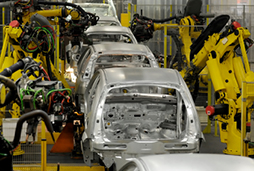
By
Tim Young
What made Henry Ford special?
He didn't invent the automobile. Karl Benz is generally considered the inventor of the modern automobile, though even he was preceded by electric and steam-powered vehicles dating back to the late 17th century.
He didn't necessarily even "invent" the assembly line, per se. Clock manufacturers, Chicago meatpackers, and even, by some accounts, Venetian shipbuilders utilized assembly lines, in one way or another.
He wasn't even first to apply the assembly line concept to automobile production. Ransom Olds, of Oldsmobile, did so almost a decade before Ford's Model-T line opened.
So what made Henry Ford special?
He brought it all together. With the help of his top production experts, Ford blended
|
|
The communications industry is in a state of flux that, in some cases, borders on disarray. |
|



Moreover, most modern CSPs are standing astride two generations. They still offer legacy services as they also roll out next-generation services. That's especially problematic for a number of reasons.
|
|
|
|

repeatability, interchangability, cost-effectiveness, and speed of assembly into an assembly line that would change the face of industrial production, worldwide.
Building a new factory concept, one brick at a time
A century later, the communications industry is in a state of flux that, in some cases, borders on disarray. Technology is advancing at a staggering rate, and providers don't have the luxury of downtime to deliver new services and solutions. Furthermore, communications service providers (CSPs) don't offer a single, unitary product. They offer an array of services with a wide variance in complexity and type. Moreover, CSPs endeavor to offer more than just an array of services. Their goal, increasingly, is to offer a total communications experience. A service is one thing. CSPs want to deliver a lifestyle.
|
|

For legacy services, planning is easy and relatively straightforward, while fulfillment is much more complex. All aspects of a service come from the service provider and the fulfillment is often a manual exercise. Silos abound. However, the next-gen environment is all IP, so service fulfillment is less about an individualized design-and-build process, and more about the arrangement and configuration of common parts into a usable design. The benefit, of course, is that this process can be largely automated.
Previous generations of service lent themselves to the creation of silos, whereas next-gen services are built from a shared pool of resources. In addition, legacy services were wholly-owned creations of the service provider. A savvy CSP offers next-gen services
|
|






